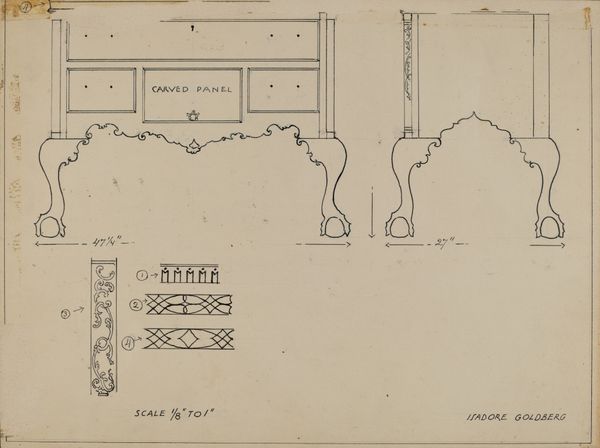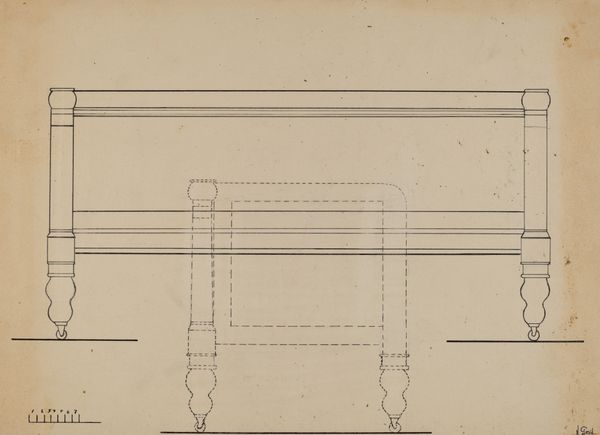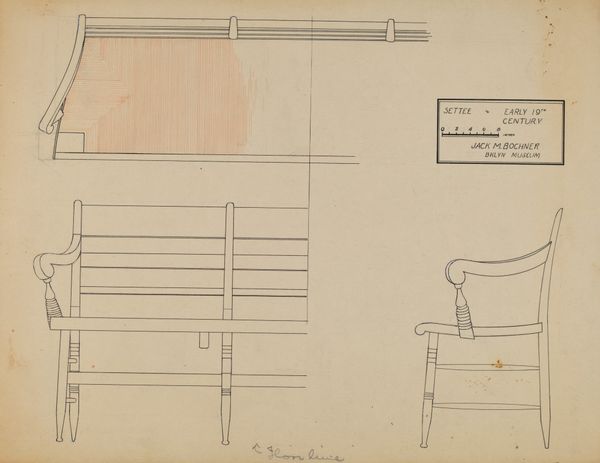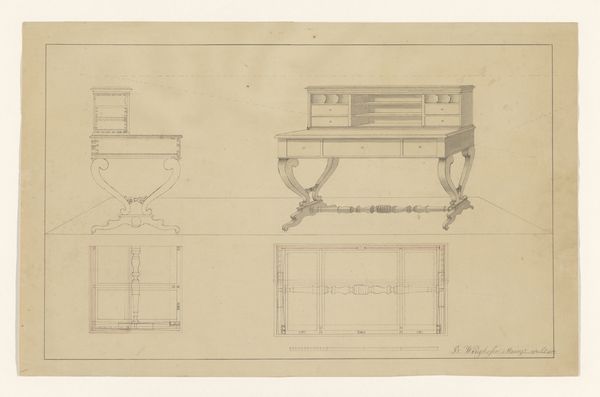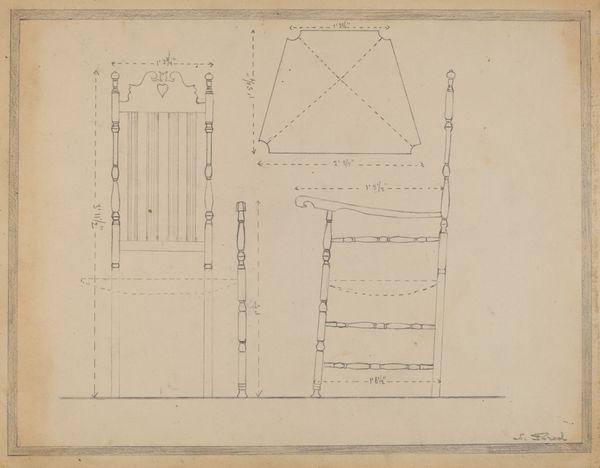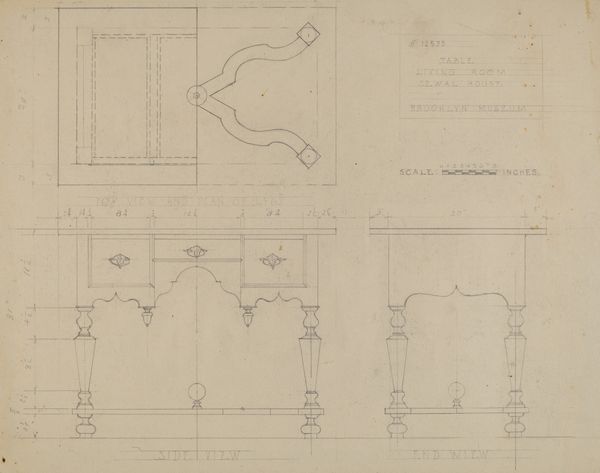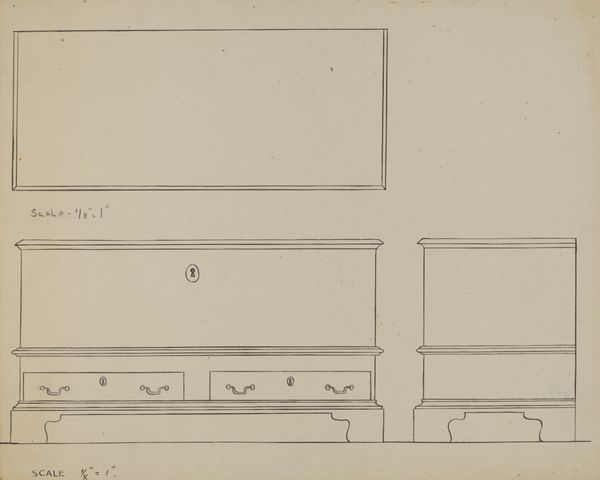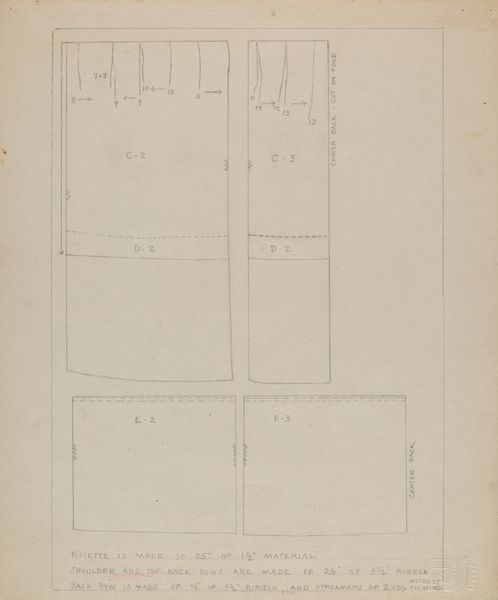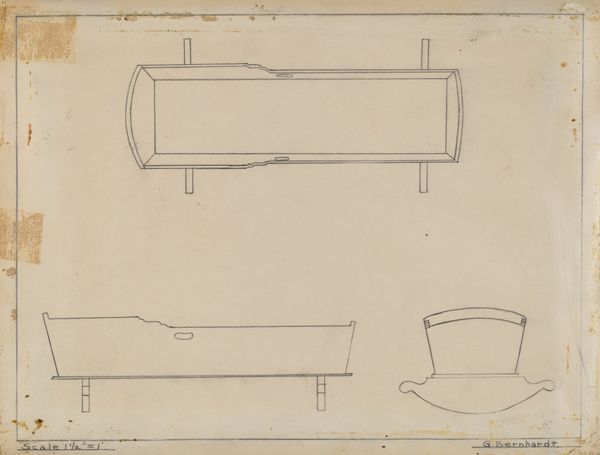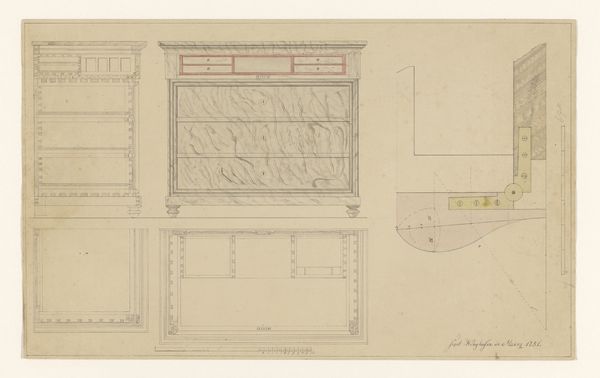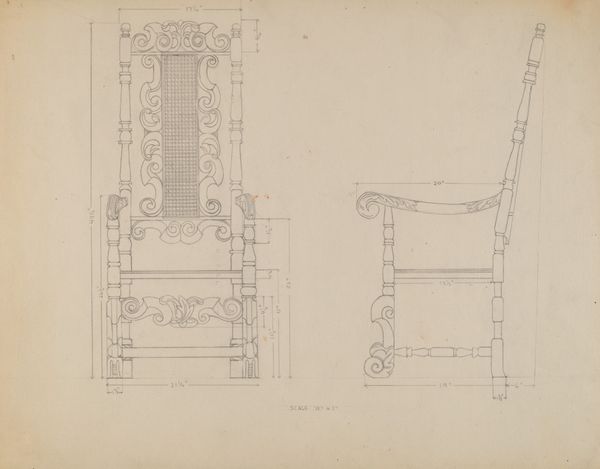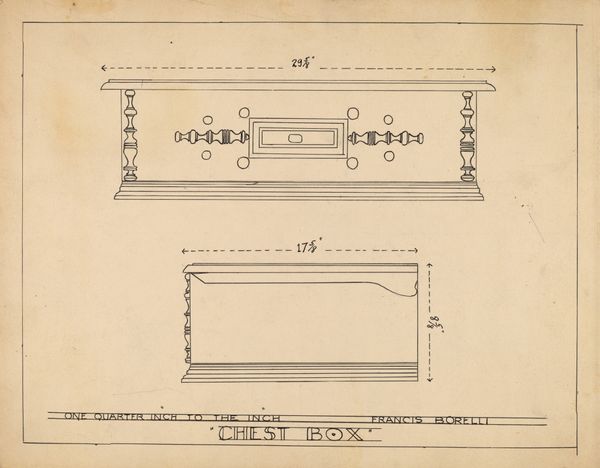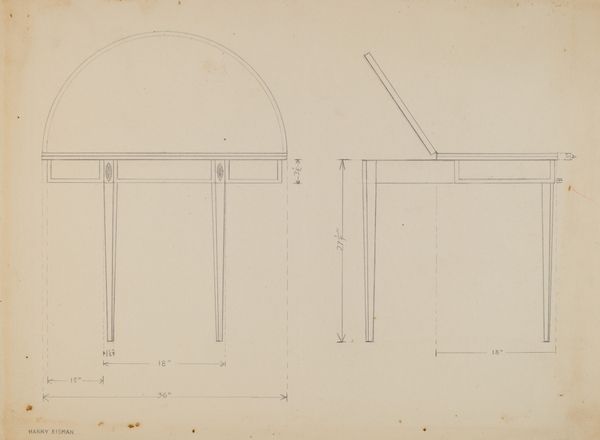
drawing, paper, pencil
#
drawing
#
paper
#
form
#
geometric
#
pencil
#
line
#
academic-art
Dimensions: overall: 20.9 x 26.9 cm (8 1/4 x 10 9/16 in.) Original IAD Object: 43 1/2"wide x 74 1/2" long x 86 3/4" high.
Copyright: National Gallery of Art: CC0 1.0
Curator: At first glance, this architectural drawing exudes an almost ethereal calm. It's called "Bed," rendered in pencil on paper by B. Holst-Grubbe between 1935 and 1942. It presents detailed end and side views. What are your initial impressions? Editor: A feeling of fragile domesticity washes over me. The precise lines contrast with the delicacy of the sketched floral patterns and the flowing curtains. There is something so intimate about a bed, isn’t there? Especially viewed in these almost clinical, detached plans. Curator: Precisely! Holst-Grubbe delivers something multifaceted here. Beds, across centuries, function as intimate theaters—birth, love, sickness, death. But rendered through the cool lens of architectural drawing, the bed also becomes an artifact worthy of formal study and preservation. Editor: You can clearly see it’s meant as a blueprint, meticulously charting measurements and structure. It’s both pragmatic and evocative, that interplay. I keep thinking about the symbolism connected to sleep, rest, dreams. It is like the design is hinting to all that happens in a domestic space. Curator: Consider how beds function symbolically. The floral embellishments speak to fertility and life. It invites consideration of social class. Notice the canopy; this suggests a desire for privacy and refuge. What public stories, do you think, might have contextualized this drawing? Editor: Given the likely period it was drafted, and considering this appears to be a reproduction of an antique design housed at the Corbin House in the Brooklyn Museum, one could view the meticulous recreation as an act of preservation during a time when historical styles might have been threatened by modernism. It feels like a reaching back to a specific visual culture for stability. Curator: Indeed. Perhaps an idealized vision of the domestic space, when external realities are difficult. The contrast is quite potent. These geometric forms carry emotional weight, revealing cultural memory as we attempt to see into our humanity. Editor: Absolutely. I had not really considered the emotional impact and history of such a common thing as the design of a bed. Fascinating how historical context and artistic intention layer onto the everyday object, giving it fresh, significant meaning.
Comments
No comments
Be the first to comment and join the conversation on the ultimate creative platform.
